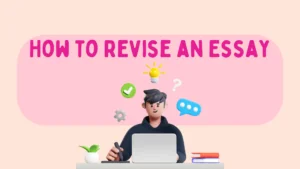So, you have a pending paper and your professor wants you to add a cover page? Don’t worry if this sounds like a big deal – it’s actually pretty easy once you get the hang of it. All you need to do is just format it in a proper way and state all of the necessary information, which we talk about below. Let’s break it down step-by-step and make your cover page stand out.

✅ AI Essay Writer ✅ AI Detector ✅ Plagchecker ✅ Paraphraser
✅ Summarizer ✅ Citation Generator
What Is a Cover Page
What’s a cover page, anyway? Simply put, it’s the first page of your essay that provides key details about your work. It usually includes the title of your essay, your name, your instructor’s name, the course, and the date. Think of it as the face of your essay – the part that gives the first impression. A well-made cover page shows that you’re organized and professional, even before anyone starts reading your essay.
But why is a cover page important? It sets the tone, gives a hint about what’s to come, and helps your professor sift through tens of other assignments. A sloppy cover page might make the reader think your essay is equally disorganized. On the other hand, a neat and well-structured cover page can create a positive mindset for the reader, making them more inclined to view your work favorably (and who doesn’t want to get a higher mark?).
When Do You Need an Essay Cover Page
Not every essay needs a cover page, but it’s often required for longer, more formal papers. Here are a few types of papers where you might need one:
| 📚Research Papers | Professors often ask for cover pages for these to keep things neat and tidy. Research papers are usually extensive, and a cover page helps manage all the information efficiently. |
| 📃College Essays | Some assignments, especially those with specific formatting guidelines, require a cover page. This is common in college-level writing where adhering to formatting standards is part of the assignment. |
| 📝Reports | For those lengthy reports in high school or college, a cover page helps keep your work organized. Whether it’s a science report, a history analysis, or a literature review, a cover page adds that professional touch. |
| 🗂Portfolios | If you’re submitting a collection of works, a cover page can give a great first impression. It introduces the reader to what they can expect in your portfolio and sets the stage for the content within. |
You might be wondering, “Do I really need to bother with a cover page for every assignment?” The answer is no, not always. Short essays, informal writing assignments, or creative pieces often don’t require a cover page. Always check with your instructor to see if a cover page is necessary for your specific assignment.
Creating a Cover Page for Essay – What to Include
Alright, let’s get into the nitty-gritty of what you need on your cover page. While different formats might have specific requirements, here are the universal basics you’ll typically include:
- Title: The name of your essay, centered on the page. Make it catchy and relevant. Your title should be informative and give the reader an idea of what your essay is about.
- Your Name: Centered, right below the title. This ensures the reader knows who wrote the essay.
- Instructor’s Name: Below your name, also centered. This is essential, especially in educational settings where the instructor needs to know who submitted the work.
- Course Name: The course or subject for which you’re writing the essay. This helps in categorizing the essay for the appropriate class or subject matter.
- Date: The submission date, placed under the course name. Including the date helps track when the assignment was submitted.
How to Do a Cover Page in APA and MLA
Now that we’ve got the basics down, let’s look at how to format your cover page in APA and MLA styles – the two most common formatting styles you’ll encounter.
APA Style
APA (American Psychological Association) style is often used for social sciences. Here’s what makes an APA cover page special:
- Running Head: A short title (50 characters or fewer) at the top of the page.
- Page Number: Aligned to the right, on the same line as the running head.
An APA cover page typically includes a running head that appears on every page of the document. This running head is a shortened version of your essay title and helps keep track of the pages if they get separated. The page number is also included in the header, aligned to the right.
Example APA Cover Page

In this example, “THE IMPACT OF SOCIAL MEDIA” appears at the top, followed by the page number on the right. The title, your name, the instructor’s name, the course name, and the date are centered.
MLA Style
MLA (Modern Language Association) style is typically used for humanities. Here’s what’s unique about an MLA cover page:
- No Running Head: Unlike APA, MLA doesn’t require a running head.
- Double-Spacing: Everything should be double-spaced.
An MLA cover page is simpler in structure. It doesn’t include a running head, but it does require double-spacing throughout the document. This style focuses on readability and simplicity.
Example MLA Cover Page

In this example, your name, the instructor’s name, the course, and the date are double-spaced and left-aligned at the top of the page. The title is centered below this information.
Final Tips
As you’ve probably gathered, there is nothing complicated about creating cover pages. Yes, it might sometimes be annoying, but it’s worth spending some time on a proper cover page to make a better impression on your professor. Here are some tips you should follow when it comes to starting your works:
- Stay consistent by using the same font and size as the rest of your essay. This consistency helps maintain a professional appearance.
- Always check and follow specific guidelines given by your instructor or institution beforehand. Each school or professor might have slightly different requirements, so double-check to avoid any mistakes.
- Keep it simple! Don’t overdo it with fancy fonts or images. Clean and professional is the way to go. While it might be tempting to add some flair, sticking to a straightforward and tidy format is usually best.
Remember, the cover page is the first thing your reader sees, so making it look sharp is a great way to start off on the right foot.
FAQ
Follow us on Reddit for more insights and updates.





Comments (0)
Welcome to A*Help comments!
We’re all about debate and discussion at A*Help.
We value the diverse opinions of users, so you may find points of view that you don’t agree with. And that’s cool. However, there are certain things we’re not OK with: attempts to manipulate our data in any way, for example, or the posting of discriminative, offensive, hateful, or disparaging material.